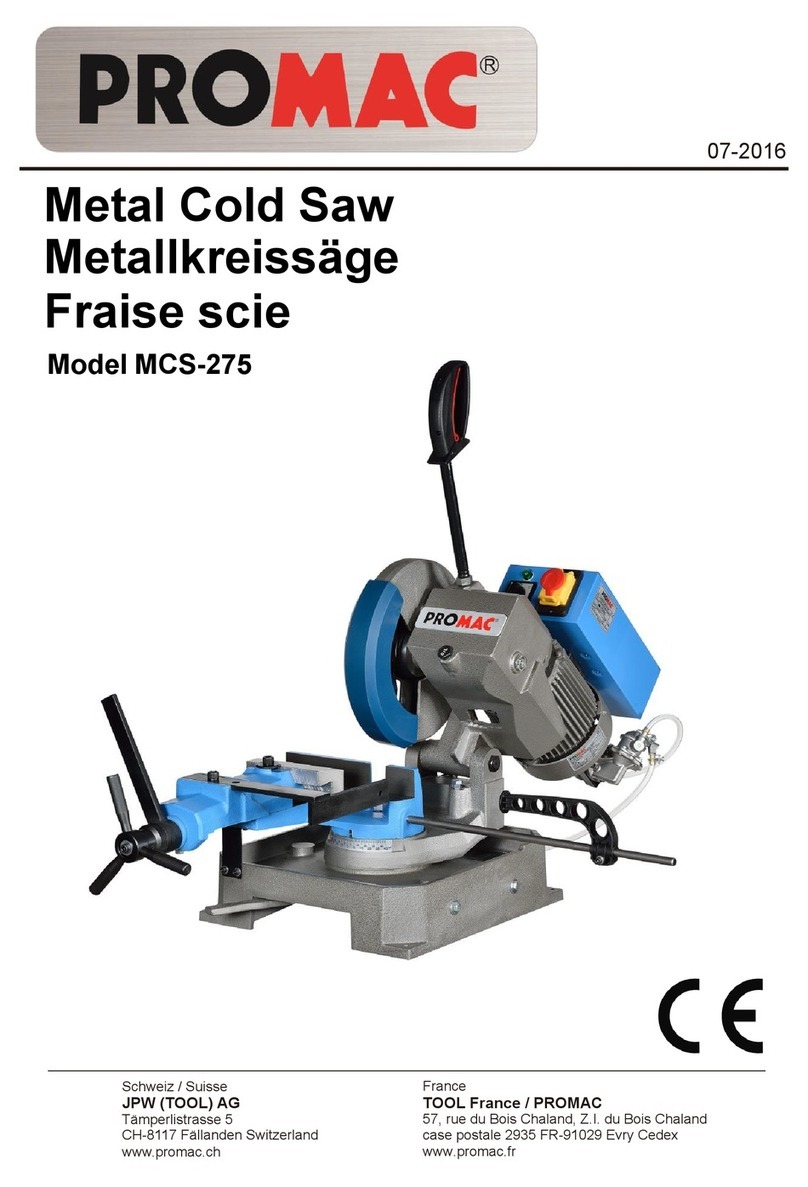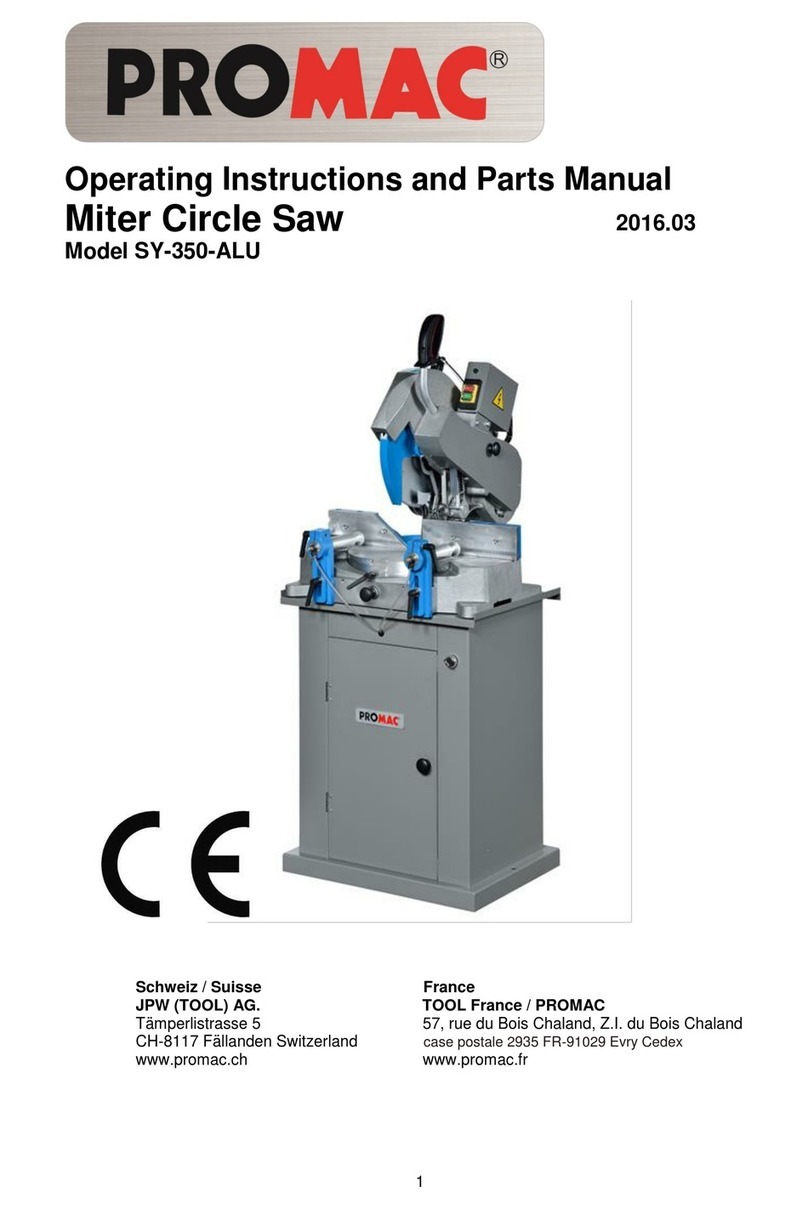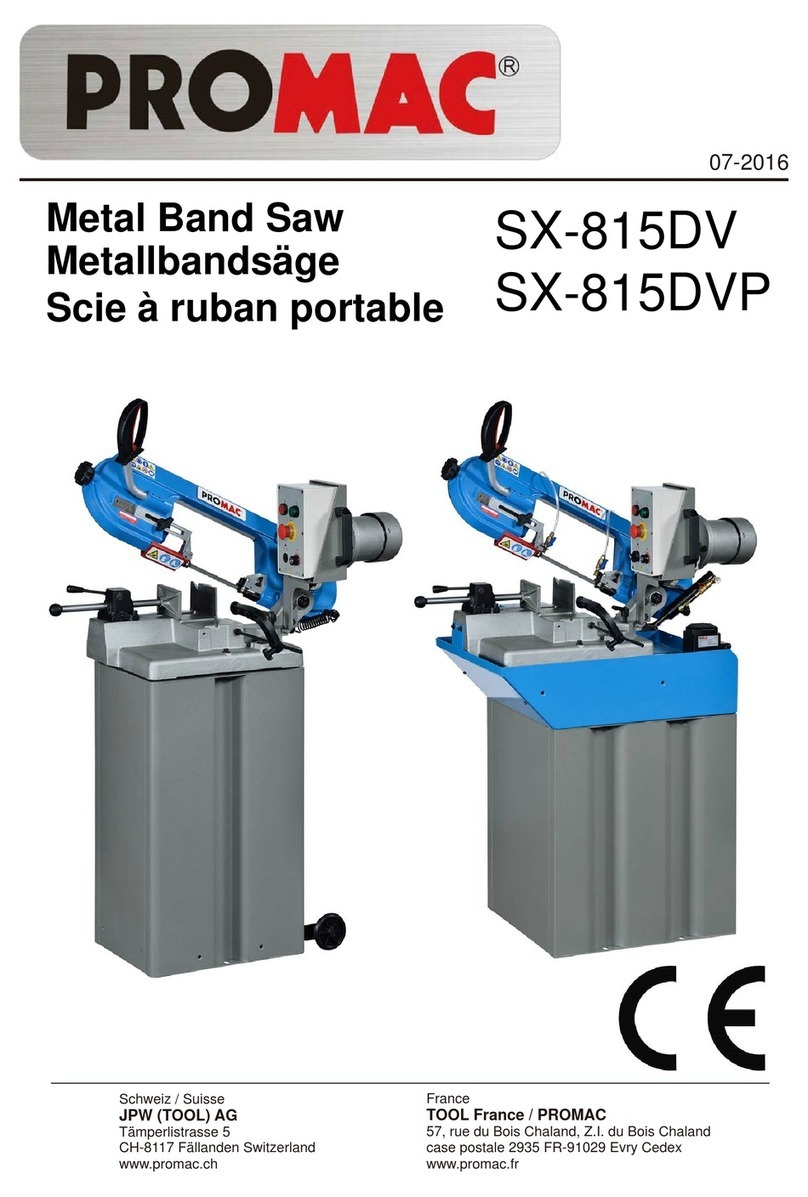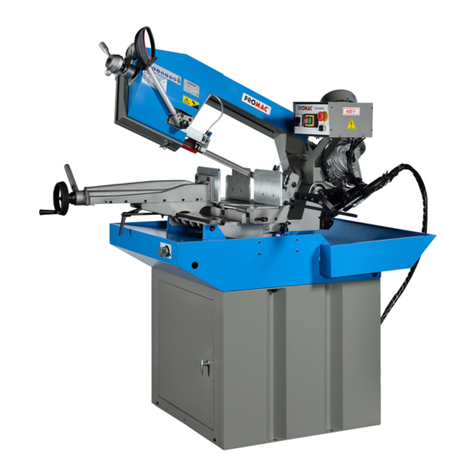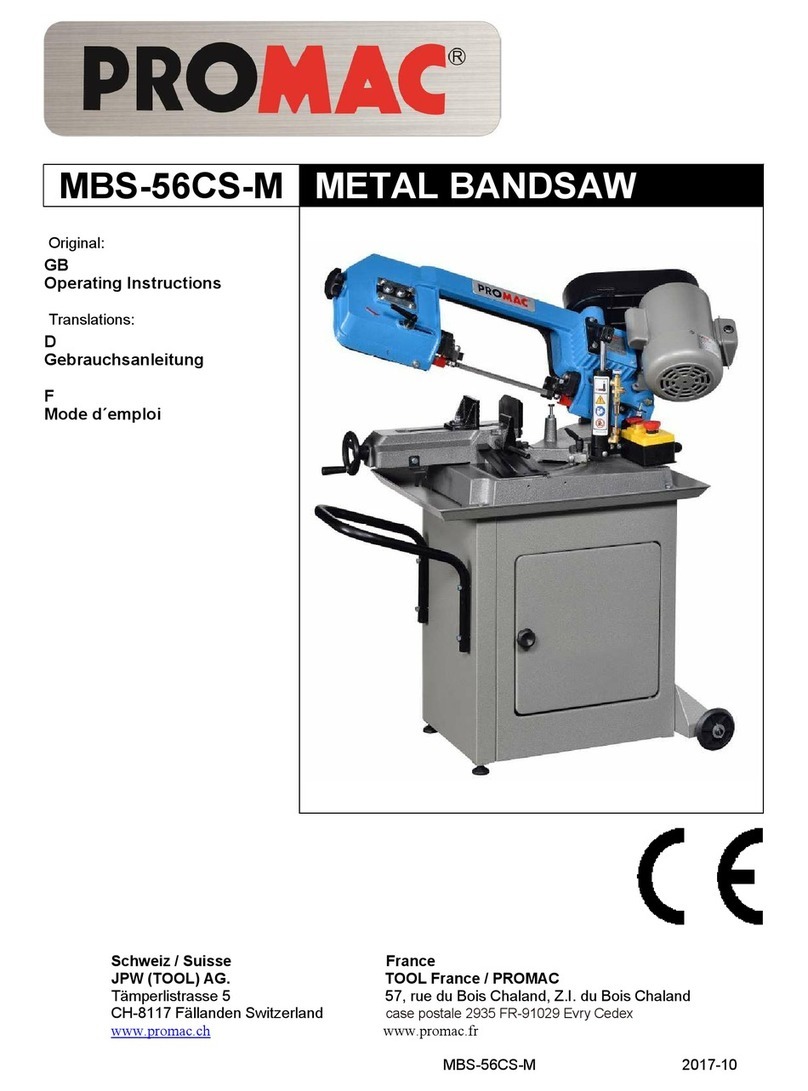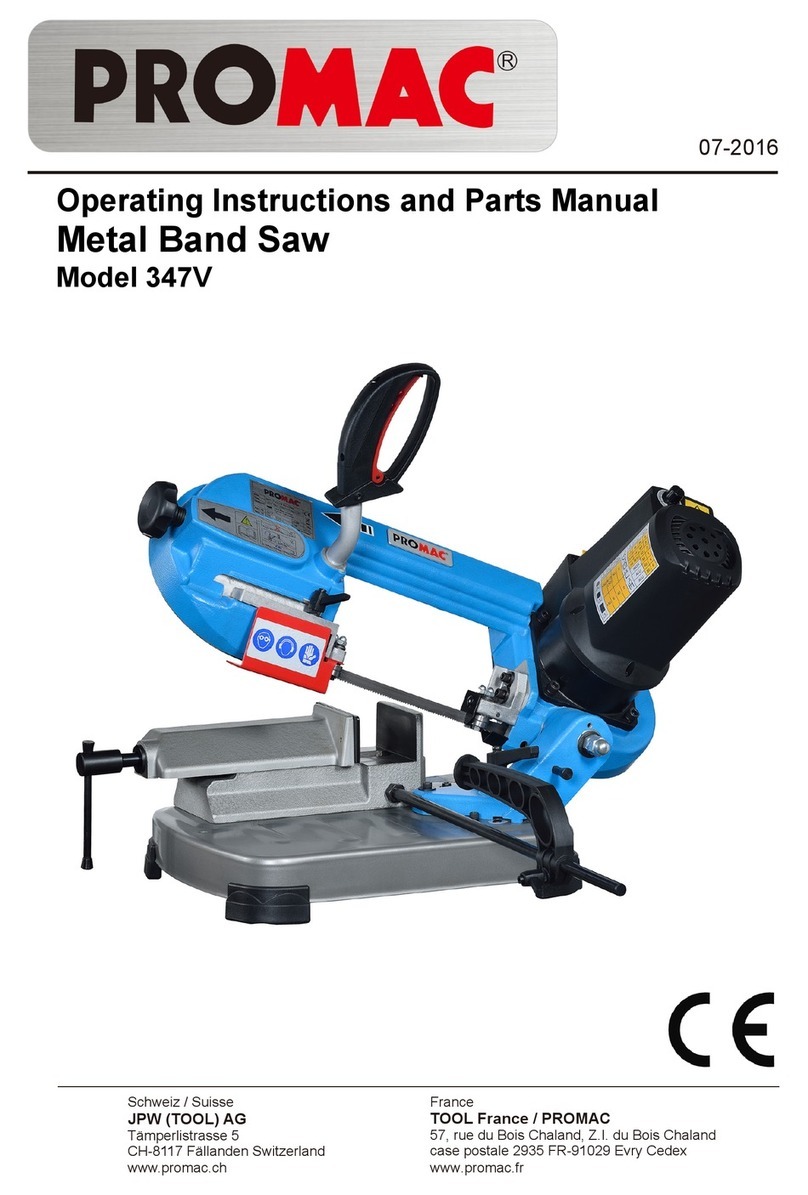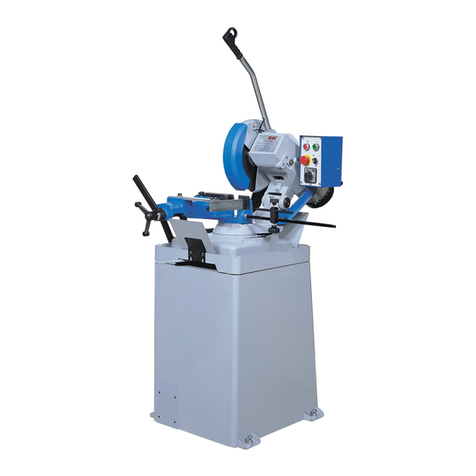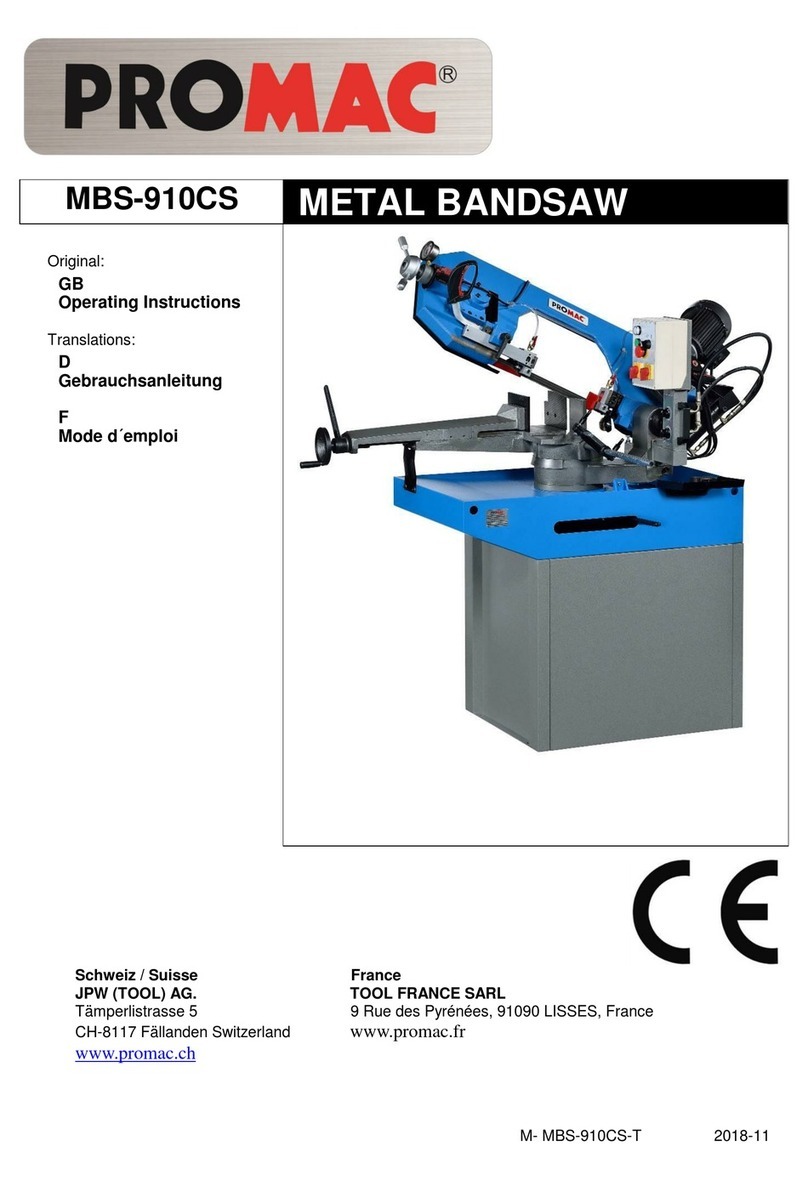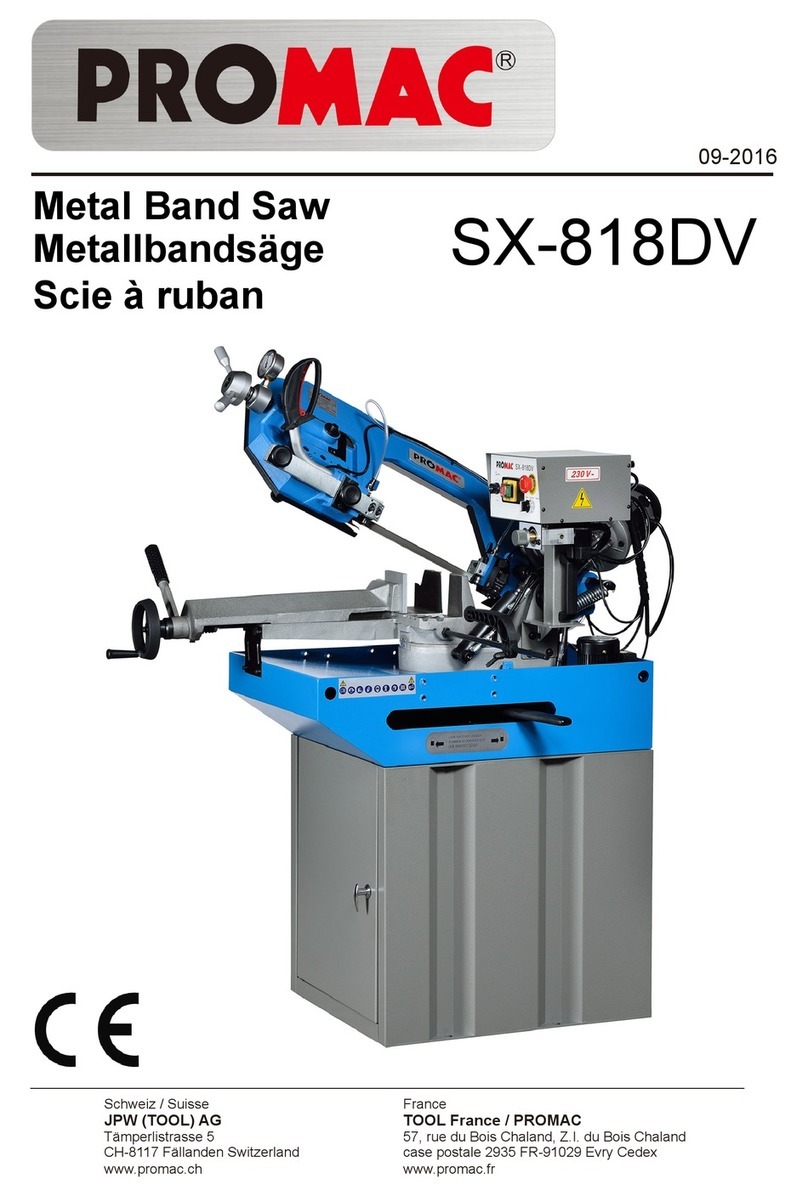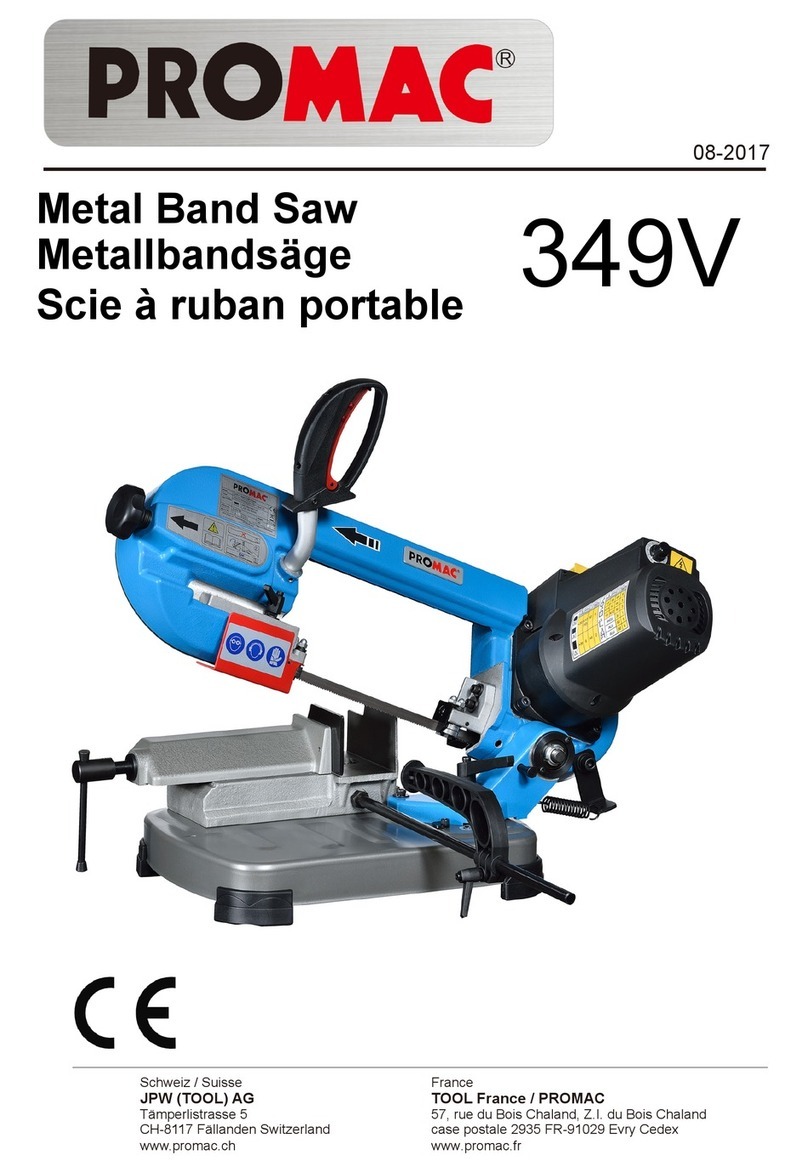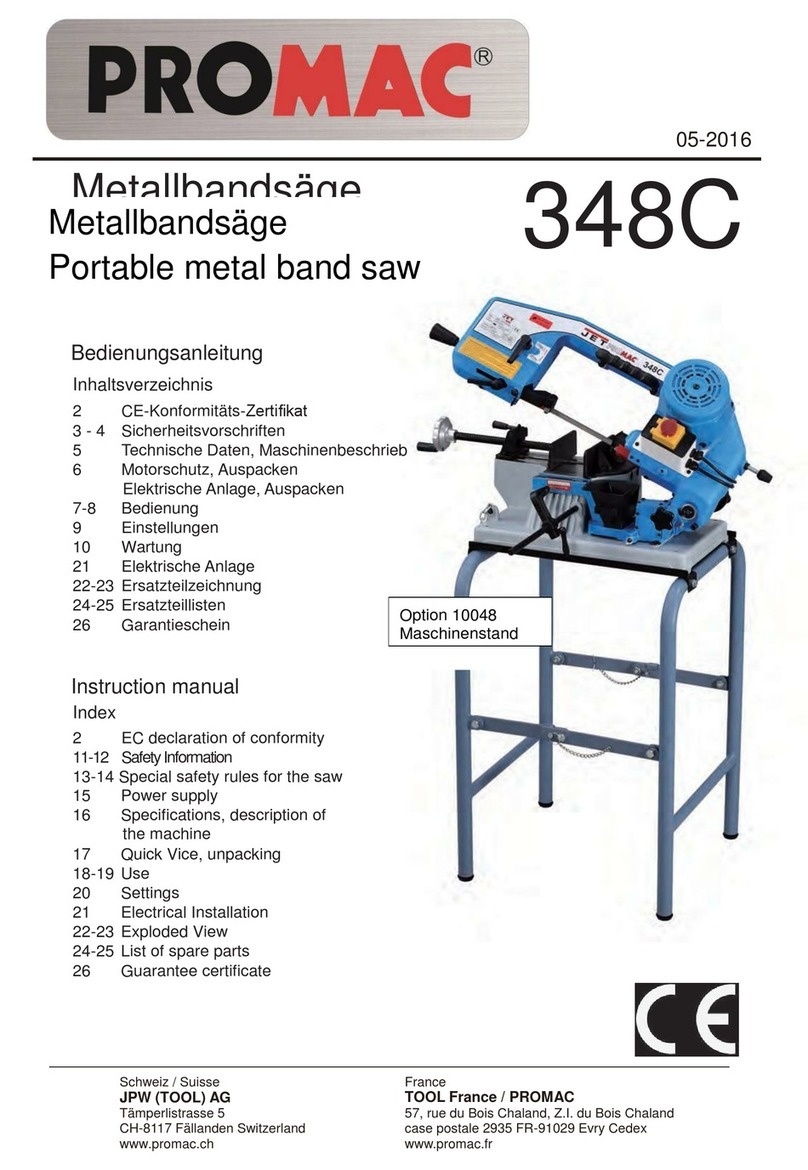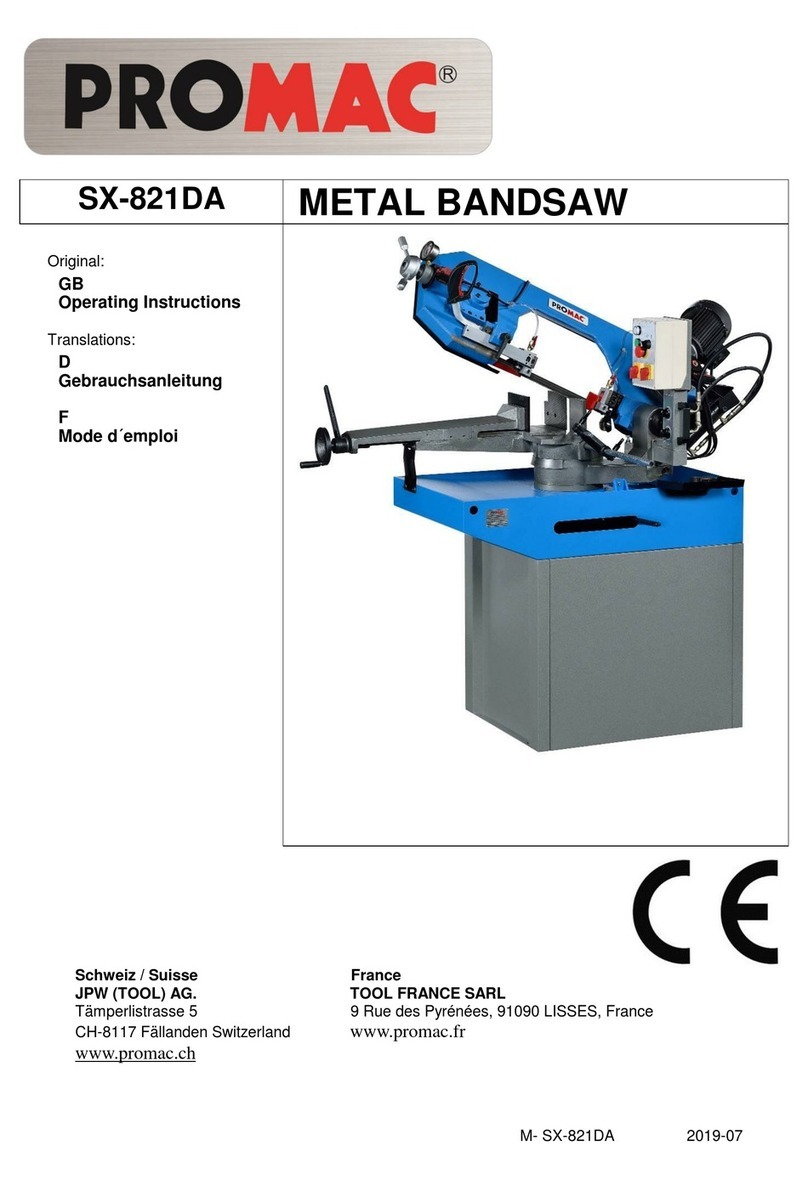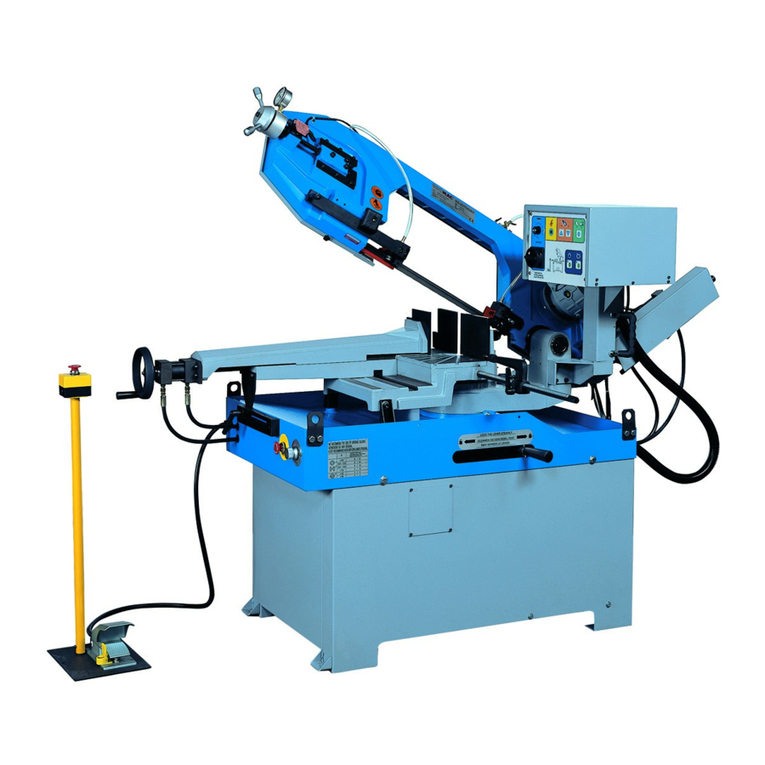
WARNING: FAILURE TO FOLLOW THESE RULES MAY
RESULT IN SERIOUS PERSONAL INJURY
As with all machinery there are certain hazards involved with operation and use of the machine. Using the machine
with respect and caution will considerably lessen the possibility of personal injury. However, if normal safety
precautions are overlooked or ignored, personal injury to the operator may result.
This machine was designed for certain applications only. We strongly recommend that this machine NOT be modified
and/or used for any application other than for which it was designed. If you have any questions relative to its application
DO NOT use the machine until you contact with us and we have advised you.
Your machine might not come with a power socket or plug. Before using this machine, please do ask your local
dealer to install the socket or plug on the power cable end.
2. SAFETY RULES FOR ALL TOOLS
A.
USER:
(1).
WEAR PROPER APPAREL. No loose clothing, gloves, rings, bracelets, or other jewelry to get caught in
moving parts.
Non-slip footwear is recommended. Wear protective hair covering to contain long hair.
(2).
ALWAYS WEAR EYE PROTECTION. Refer to ANSLZ87.1 standard for appropriaterecommendations. Also
use face or dust mask if cutting operation is dusty.
(3).
DON'T OVERREACH. Keep proper footing and balance at all times.
(4).
NEVER STAND ON TOOL. Serious injury could occur if the tool is tipped or if the cutting tool is accidentally
contacted.
(5).
NEVER LEAVE TOOL RUNNING UNATTENDED. TURN POWER OFF. Don't leave tool until it comesto a complete
stop.
(6).
DRUGS, ALCOHOL, MEDICATION. Do not operate tool while under the influence of drug, alcohol or any
medication.
(7).
MAKE SURE TOOL IS DISCONNECTED FROM POWER SUPPLY. While motor is being mounted, connected
or reconnected.
(8).
ALWAYS keep hands and fingers away from the blade.
(9). STOP the machine before removing chips.
(10). SHUT- OFF power and clean the BAND SAW and work area before leaving the machine.
(11).DO NOT Touch the cutting Blade while the machine is turm on.
B.
USE OF MACHINE:
(1).
REMOVE ADJUSTING KEYS AND WRENCHES. Form habit of checking to see that keys and adjusting
wrenches are removed from tool before turning it "on".
(2).
DON'T FORCE TOOL. It will do the job better and be safer at the rate for which it wasdesigned.
(3). USE RIGHT TOOL. Don't force tool or attachment to do a job for which it was notdesigned.
(4).
SECURE WORK. Use clamps or a vise to hold work when practical. It's safer than using your hand frees both
hands to operate tool.
(5).
MAINTAIN TOOLS IN TOP CONDITION. Keep tools sharp and clean for best and safest performance.
Follow instructions for lubricating and changing accessories.
(6).
USE RECOMMENDED ACCESSORIES. Consult the owner's manual for recommended accessories. Theuse of
improper accessories may cause hazards.
(7).
AVOID ACCIDENTAL STARTING. Make sure switch is in “OFF” position before plugging in power cord. (8).
DIRECTIONOF FEED. Feed work into a blade or cutter against the direction of rotation of the blade or cutter only.
(9).
ADJUST AND POSITION the blade guide arm before starting the cut.
(10).
KEEP BLADE GUIDE ARM TIGHT, A loose blade guide arm will affect sawing accuracy. (11).
MAKE SURE blade speed is set correctly for material being cut.
(12).
CHECK for proper blade size and type.
(13).
STOP the machine before putting material in the vise.
(14).
ALWAYS have stock firmly clamped in vise before starting cut.
(15).
GROUNDALL TOOLS. If tool is equipped with three-prong plug, it should be plugged into a three-hole electrical
receptacle. If an adapter is used to accommodate atwoprong receptacle, the adapter lug must be attached to a
known ground. Never removed the third prong.
C.
ADJUSTMENT :
